On August 25, 2017, the 2017 “Belt and Road†textile and garment industry development forum was held in Urumqi, Xinjiang Uygur Autonomous Region. This is the only one in China that has combined the “One Belt and One Road†strategy with the development of textile and garment industry. Level, international, national professional forum. In May of this year, President Xi Jinping proposed to build the “Belt and Road†into the road of peace, the road to prosperity, the road to openness, the road to innovation and the road to civilization. The “Belt and Road†economic belt, especially as the Silk Road Xinjiang, the core area of ​​the economic belt, has ushered in a new round of development opportunities. How does the “One Belt, One Road†initiative combine with the development of China's textile and garment industry? How to actively promote the development of Xinjiang's textile and garment industry and create the influence of the new era of Xinjiang textile and garment industry? 2017 “One Belt, One Road†textile and garment industry development forum will be internationalized The strategic perspective and professional wisdom analysis give exclusive thinking.
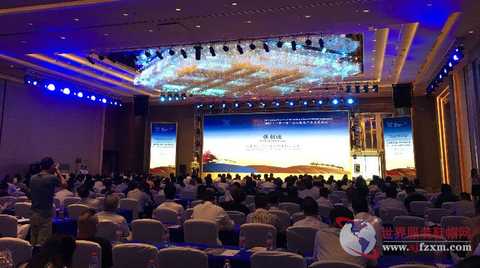
Following the successful hosting of the first “Belt and Road†textile and garment industry development forum in 2016, the 2017 “Belt and Road†textile and garment industry development forum continued the first wonderful, further digging deep into the development momentum of Xinjiang textile and garment industry, and committed to becoming the foreign exchange of Xinjiang textile and garment industry. A business card, builds the “Belt and Road Initiative†initiative of China's textile and apparel industry, and promotes an important communication and communication platform for the production capacity of the industry along the “Belt and Road†economic belt. The forum was sponsored by the People's Government of Xinjiang Uygur Autonomous Region, the China Textile Industry Federation, the Xinjiang Textile and Apparel Employment Leading Group Office, the China-Asia-Europe Expo Secretariat, the Xinjiang International Expo Office, and the Xinjiang Uygur Autonomous Region Textile Industry Management Office. China Textile magazine, China Cotton Textile Industry Association, China Knitting Industry Association. Gao Yong, Secretary of the Party Committee and Secretary General of the China National Textile and Apparel Council, Deputy Secretary-General of the People's Government of Xinjiang Uygur Autonomous Region, Liang Yong, Director of the Office of the Leading Group for the Development of the Textile and Apparel Industry of the Autonomous Region, Xia Lingmin, Vice President of the China National Textile and Apparel Council, China-ASEAN Center Secretary-General Yang Xiuping, Deputy Director of the Consumer Products Industry Department of the Ministry of Industry and Information Technology Cao Xuejun, Chairman of the Malaysian International Business Promotion Association Zhang Chuangdi, President of Azerbaijan Baku International New Port Tareja Gyadov, World Bank Senior Economist Zeng Zhihua, China Cotton Textile Zhu Beina, President of the Industry Association, Duan Hong, Director of the China National Textile and Apparel Council, Qi Jing, Vice President of China Knitting Industry Association, Zheng Jiewen, Vice President of China Cotton Textile Industry Association, Gu Ping, Vice President of China Textile Machinery Association, China Vice President of Hengtian Group Co., Ltd., General Manager of China Textile Machinery (Group) Co., Ltd., Party Secretary Ye Maoxin, CEO of Ruyi Holding Group, CEO of Ruyi Technology Group, Wang Qiang, Vice Chairman and CEO of Esquel Group , Xinjiang International Expo Zou Jianjun, member of the party group and deputy director, Hu Shungang, deputy director of the Xinjiang Textile Industry Management Office, Jiang Lei, publisher of China Textile magazine, and other leading guests, ambassadors to China, international social organizations and business representatives, nearly 400 countries People attended the forum and focused on the key topics of the development of Xinjiang textile and garment industry. They discussed the development of Xinjiang textile and garment industry. The meeting was hosted by Yang Xiaodong, deputy director of the Xinjiang Textile Industry Management Office.
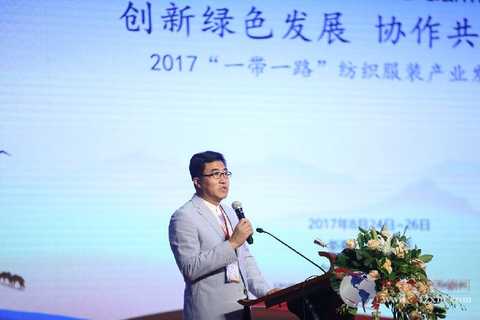
Yang Xiaodong, deputy director of Xinjiang Textile Industry Management Office
The forum is rich in content and is launched in the way of the main forum plus points forum. The main forum invited leaders of the national textile industry authorities along the “Belt and Roadâ€, relevant leaders of the Chinese government departments, Xinjiang Uygur Autonomous Region, China Textile Industry Federation, and representatives of well-known textile enterprises in China to focus on “innovative green development and win-win cooperationâ€. The theme of the future, from a multi-faceted perspective to jointly explore the future development of Xinjiang textile and garment industry under the opportunity of the “Belt and Road†era.
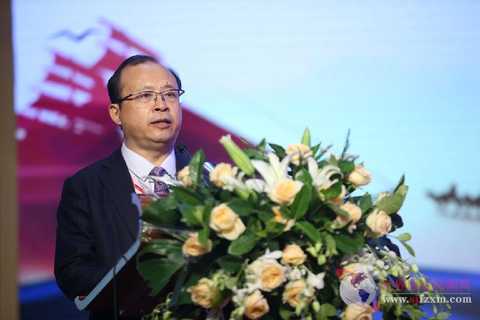
Liang Yong, deputy secretary-general of the People's Government of Xinjiang Uygur Autonomous Region and director of the Office of the Leading Group for the Development of Textile and Apparel Industry in the Autonomous Region, said in his speech that starting from 2014, Xinjiang has entered a new round of economic development and the growth of fixed asset investment. Rapidly, the number of enterprises has grown by spurt, and the pace of industrial transfer in the eastern coastal areas has accelerated. The textile and garment industry has become a new bright spot in Xinjiang's economy and the main channel for solving the employment of ethnic minorities.
Liang Yong said: From January 2014 to the end of July 2017, the fixed assets investment of Xinjiang textile and garment industry reached 120.73 billion yuan, of which 31.35 billion yuan in January-July this year, an increase of 38.8%. 283,800 new jobs were added. The viscose fiber production capacity is 850,000 tons, and the Kaisei 100,000 tons polyamide 56 project is about to be completed and put into production. Cotton spinning ring spinning 13.14 million spindles, rotor spinning spindles 426,000 heads, weaving machines 18,000 sets, garment sewing equipment more than 150,000 sets, automatic cutting machines 33 sets, hosiery machines 7410 sets, knitting flat knitting machines 3563 sets, carpets There are 126 looms, 4,548 tons of wool, 23,000 tons of towels, and 79,300 tons of geotextiles. As of the end of June 2017, the number of enterprises registered in the autonomous region reached 2,525, an increase of 1965 from the end of 2013. Nearly 600 domestic enterprises such as Huafu, Ruyi, Youngor, Jinsheng, Jifa and Hongdou came to Xinjiang for investment and development. Xinjiang It has become a “hot spot†for China's textile and apparel industry investment, and has also attracted the attention of the global textile industry.
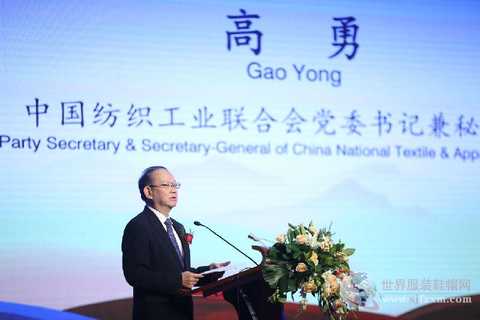
In the speech, Gao Yong, secretary of the Party Committee and Secretary General of the China National Textile and Apparel Council, fully affirmed the innovation and development of Xinjiang textile and garment industry in recent years: “Xinjiang, as an important node of the “Belt and Roadâ€, continued in the first half of 2017. The booming trend of the year. The investment amount from January to June increased by 49.3% year-on-year, and the contribution to the western investment increased by 150%.†At the same time, Gao Yong also pointed out that in 2017, the target of millions of people raised in Xinjiang was still In the past six years, the task is arduous. I believe that under the opportunity of the times given by the “Belt and Roadâ€, the Xinjiang textile and garment industry will not disgrace its mission and will not break the future of innovation.
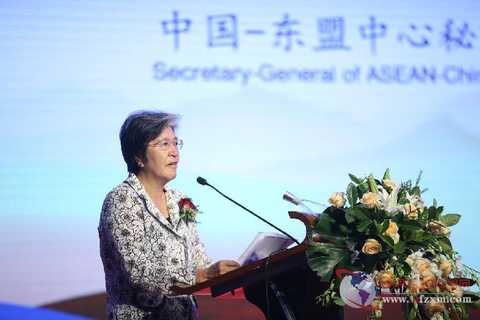
Yang Xiuping, secretary general of the China-ASEAN Center, said in his speech that the ASEAN countries have been the hub of the ancient Maritime Silk Road since ancient times. The China-ASEAN relationship has become the most active and strong relationship between ASEAN and the dialogue partnership. China has become ASEAN's largest trading partner for eight consecutive years. ASEAN has become China's third largest trading partner for six consecutive years. In order to further promote China-ASEAN cooperation, she suggested that the competent authorities of both governments should strengthen the promotion of the “Belt and Road†and the China-ASEAN Free Trade Area upgrade policy, so that more enterprises can understand and enjoy relevant preferential policies and enhance cooperation. Endogenous power; the industry associations of both sides should strengthen the precision docking, clarify the needs of each other, give play to their respective advantages, and promote the realization of industrial upgrading and mutual benefit and win-win; the enterprises of both sides can combine the characteristics of different countries, through the use of industrial parks and the expansion of e-commerce. Open up new ways to expand cooperation.
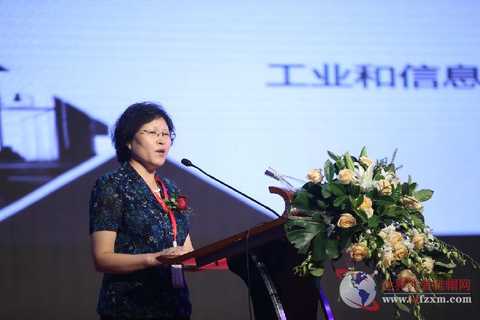
Cao Xuejun, deputy director of the Department of Consumer Products Industry of the Ministry of Industry and Information Technology, took the title of “Catch the Belt and Road†Opportunity to Promote the Sustainable Development of Xinjiang Textile Industry, and analyzed the current development of the textile economy and the “Belt and Road†to Xinjiang Textile. The impact of the industry pointed out that Xinjiang should seize the opportunity to accelerate the sustainable development of the textile industry. She stressed: "The textile industry is in the process of increasing speed and shifting gears, and the domestic production and export are down; the structural adjustment is obvious, but the upgrade is not progressing fast; strengthening the core tasks and promoting the key period of textile power construction. 'One Belt, One Road' initiative for Xinjiang textile and apparel The development of the industry has brought new opportunities, provided a safe and stable environment for the international development of enterprises; created conditions for breaking the trade protection and opening up diversified markets; it is conducive to building a multinational supply chain to enhance the competitiveness of enterprises. Xinjiang's unique advantages; priority to develop cotton spinning and knitting home textile industry chain; high standards, high starting point to develop textile and garment industry."
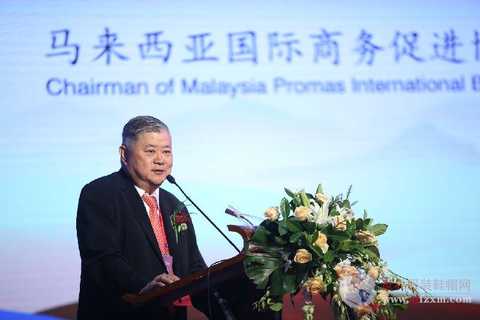
Zhang Chuangdi, president of the Malaysian International Business Promotion Association, introduced the development of the textile and garment industry in Malaysia. He said that Malaysia is the first country in the ASEAN countries to establish diplomatic relations with China. The trade cooperation between Malaysia and China is closely related. The efforts of the business community are inseparable. Under the background of the development of “One Belt, One Roadâ€, we hope to introduce the textile and garment industry in Malaysia to the world.
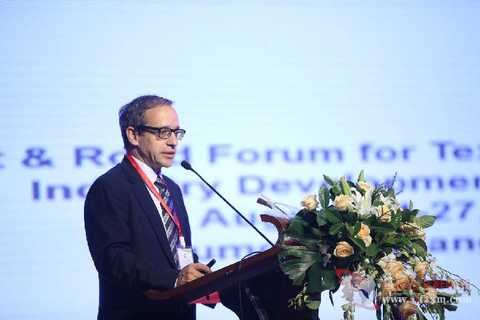
Dr. Christian P. Schindler, Director General of the International Federation of Textile Manufacturers, gave a speech on the theme of “The Textile (Machinery) Industry in Distress), Explaining the Status Quo and Prospects of the Global Textile and Apparel Industry , to prevent new disruptive technologies and innovations in the manufacturing industry, the current investment in manufacturing, and the impact on the global textile industry.
Christian mentioned that the fastest growing region for apparel sales will be Asia. The global textile and apparel market continues to grow; the share of e-commerce is rising; new technologies allow mass customization; textile production is concentrated in Asia (especially China); some textile production is transferred to other Asian countries; technology-based (digital, 3D printing, automation) ), fashion trends (fast fashion), cost reduction, sustainable development (traceability, circular economy) and other factors, other regions, such as Africa, America, Europe, etc. have greater production potential.
In addition, global fiber consumption is rising, and man-made fibers have benefited the most, of which polyester filaments have the fastest growth rate. Wool has become a "luxury" fiber, and slowly, cotton will also become a "luxury" fiber.
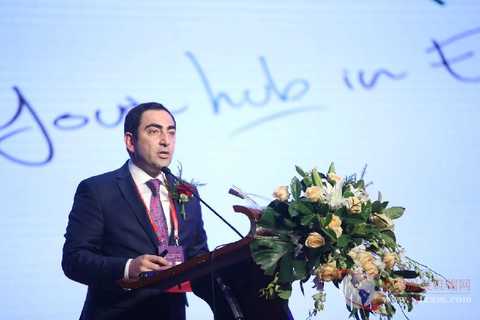
Tarek Giyadov, President of Baku International New Port of Azerbaijan, introduced the status of Azerbaijan in the history of the “Belt and Road†and the construction of modern transportation and logistics with the theme of “Azerbaijan Hub Strategy in the Background of “One Belt, One Roadâ€â€. Situation and preferential policies. He pointed out that Azerbaijan's labor market is highly efficient and has obvious location advantages. It now has good transportation conditions linking other countries. Among them, the port of Baku in the Ala Special Zone is the international distribution center of the region. It will soon become the largest Alat Free Trade Zone in the Caspian Sea region as a link between China and European countries. It is the node of the “North-South†transport corridor and the “Belt and Road†initiative. To this end, Azerbaijan will actively engage in the "Belt and Road" initiative to accelerate international cooperation and trade exchanges.
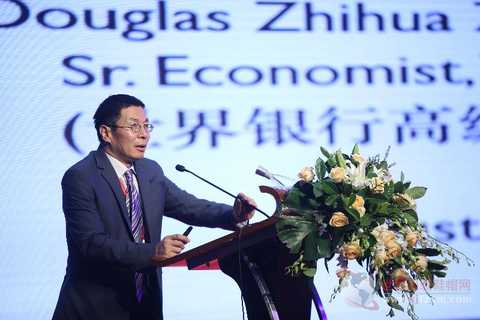
Zeng Zhihua, a senior economist at the World Bank and vice chairman of the US-China International Chamber of Commerce, delivered a keynote speech entitled “The Impact of New Technologies on Global Value Chainsâ€. Zeng Zhihua pointed out that “Automation + Internet of Things (IoT) + 3D Printing = Manufacturing future". Specifically, it is characterized by more complex design capabilities, shorter lead times, improved manufacturing efficiency, and more fragmented manufacturing. Instead of promoting efficiency through economies of scale, it is more focused on Produce customized products close to the end customer.
According to World Bank data, developing countries are facing employment peaks in manufacturing, accompanied by lower income levels. Next, Zeng Zhihua explained in detail the impact of new technologies on the textile and apparel industry, and pointed out how to meet the arrival of the new technology era and better strengthen China's ability to innovate.
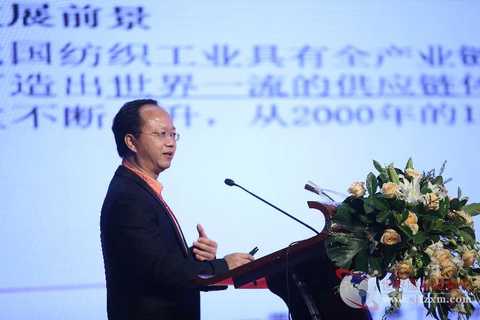
The academic committee and research institute of the National Development and Reform Commission's International Cooperation Center, Huang Yongfu, introduced the origins of Xinjiang and the ancient Silk Road and the new opportunities under the “Belt and Road†with the title of “One Belt, One Road†and Xinjiang's Development Opportunities. He pointed out that Xinjiang's civilization-related region is not only an intermediary of civilization, but also promotes the development of culture in various civilizations. It can even be said that the civilized intermediary areas such as Xinjiang in the process of human modern civilization have made great contributions. Nowadays, as an important bridgehead of the “Belt and Road†and a hub of the “Silk Road Economic Beltâ€, Xinjiang still has all the unique advantages of the ancient Western Region in the east-west region of Asia and Europe, with huge advantages in transportation, commerce, tourism, education and culture. The potential for cooperation. To this end, Xinjiang should seize the opportunity of “One Belt, One Road†and actively exert its own advantages; accelerate the construction of infrastructure and promote the development of trade and logistics; accelerate the adjustment of industrial structure and deepen the structural reform of supply side.
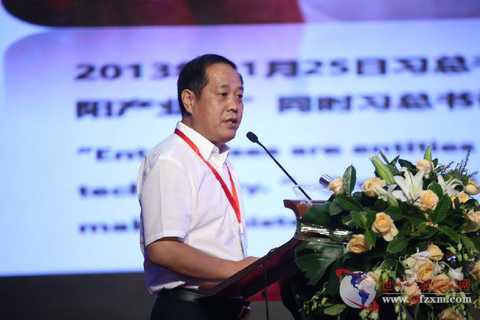
Wang Qiang, CEO of Ruyi Holding Group and CEO of Ruyi Technology Group, introduced the innovative development and corporate vision in recent years with the theme of “Transformation and upgrading of green development around the “One Belt, One Road†international layoutâ€. At present, Ruyi is ranked among the top 500 Chinese companies and 100 multinational companies in China. It has more than 20 holding or shareholding companies in 15 countries around the world, and has established 5,000 brand retail networks in 34 countries around the world. An internationally renowned textile and apparel brand. In the past three years, Ruyi has been accelerating the implementation of transformation and upgrading around the “Belt and Roadâ€. Through the creation of intelligent manufacturing of the entire industry chain, it has continuously moved toward “scientific, high-end, brand, and internationalization†and strives to build a world-renowned fashion industry group as soon as possible.
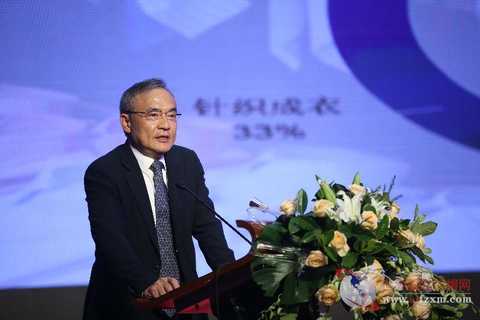
Ke Kejun, Vice Chairman and CEO of Esquel Group, gave a keynote speech on the theme of “Sustainable Textile and Apparel Industryâ€. According to reports, Esquel is a vertically integrated cotton garment manufacturer, covering industries such as cotton planting, spinning, needle/woven fabrics, garment manufacturing, accessories and packaging, and retail and brand distribution. 1.3 billion US dollars, with an annual output of more than 100 million shirts. In order to achieve sustainable development of the company, the company not only takes the lead in investing in Xinjiang, but also accelerates technological innovation and lean management, and pays attention to environmental protection and other corporate social responsibility.
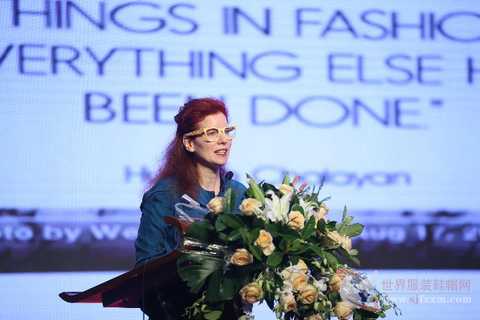
Aina, President of 360Fashion Network, gave a speech titled “Exploring the Future of Smart Textiles and Related Environmentsâ€. It not only shared the trend of global smart textiles, but also showed examples of relevant smart textiles, allowing participants to feel textiles more intuitively. Intelligent.
On the afternoon of the same day, the “Green Engine Intelligent Layout – National Cotton Spinning and Knitting Industry Cluster Innovation Conference†was held in a sub-forum, hosted by Hu Shungang, deputy director of the Xinjiang Textile Industry Management Office, and invited industry leaders, experts and business representatives to The five-priority plan, the development status of Xinjiang textile and garment industry and related policies, cluster innovation and development experience, advanced spinning and knitting technology and other hot topics are discussed.
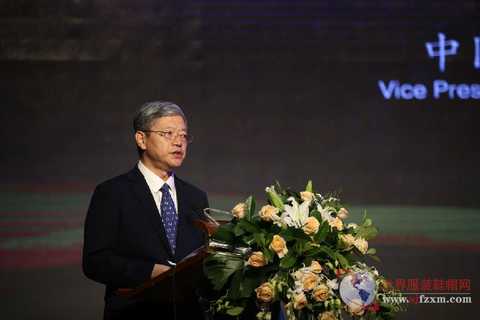
Xia Lingmin, vice president of the China National Textile and Apparel Council, said in his speech that the main forum in the morning comprehensively analyzed the future opportunities of the textile and garment industry under the “Belt and Road Initiative†initiative. The sub-forum in the afternoon will collide with more wisdom sparks for the industry. Great development, great prosperity in Xinjiang, enthusiastic suggestions and suggestions, grasping the development opportunities in Xinjiang, and jointly exploring new growth points in the development of industries and enterprises in the boom of the “Belt and Road†high-speed construction.

Liang Yong, deputy secretary-general of the People's Government of Xinjiang Uygur Autonomous Region, introduced the development of Xinjiang in recent years and the specific measures for the next step of adjustment.
Zheng Jiewen, Vice President of China Cotton Textile Association, Zhao Hong, Vice President of China Knitting Industry Association, Shi Jianping, Deputy General Manager of Jingwei Textile Machinery Co., Ltd., Michael Hubensteiner, Managing Director of Rieter (China), Hu Benshi, Deputy of Xinjiang Fuli Zhenlun Cotton Textile Co., Ltd. Chairman Shen Yaohua, Zhengzhou Commodity Exchange Agricultural Products Exhibition, Lv Yongfa, Chief Engineer of Zhejiang Rifa Textile Machinery Co., Ltd., Chairman and CEO of Shanghai Kaisai Biotechnology Co., Ltd. Liu Xiucai, Xinjiang Aksu Textile Industrial City (Development Zone) Liu Yong, deputy secretary and director of the Party Committee of the Management Committee, Kong Shiquan, deputy director of the Xinjiang Shihezi Economic and Technological Development Zone Management Committee, and Zhu Cheng, chairman of Jiangsu Chuancheng Clothing Co., Ltd., gave speeches respectively on the current hot issues in the industry. Explore.
In 2014, the state put forward a planning outline for “developing the textile and garment industry to drive the employment of millions of people†in Xinjiang. Under the guidance of this outline, under the attraction of the continuous introduction of preferential policies in Xinjiang Uygur Autonomous Region, from 2014 to 2016, the fixed assets investment of Xinjiang textile and garment industry reached 89.4 billion yuan, exceeding the fixed textile and garment industry in the 35 years after the reform and opening up in Xinjiang. The sum of asset investment. The number of newly-employed people reached 248,800, of which the newly-employed employment in the four states of southern Xinjiang reached 132,500, accounting for 53.3%. As of June 2017, the number of textile and garment enterprises registered in the district has reached 2,525, an increase of 1965 from three years ago, 4.5 times that of three years ago. Among them, the mainland has invested in setting up factories in the past ten years ago. The number of homes has increased to 682. Xinjiang has become the hottest, lowest cost and fastest growing region in China's textile and garment industry, and has become the most advantageous area for “going out†under the “Belt and Road†initiative.
Through this "Belt and Road" textile and garment industry development forum, the integration of various textile resources across the country will inevitably play a positive role in solving the current development of Xinjiang's textile and garment industry, and seek solutions to the problems facing the world and regional economies. To the effective program, inject new kinetic energy into the development of the garment industry in Xinjiang. Through the collision of wisdom, the Xinjiang textile and garment industry will be promoted to achieve continuous, innovative and green development under the “One Belt, One Road†policy.
Woven Print,Printed Woven Fabric,Woven Print Fabric,Printed Non Woven Fabric
SHAOXING KAIMING TEXTILES CO.,LTD , https://www.kaimingtextiles.com